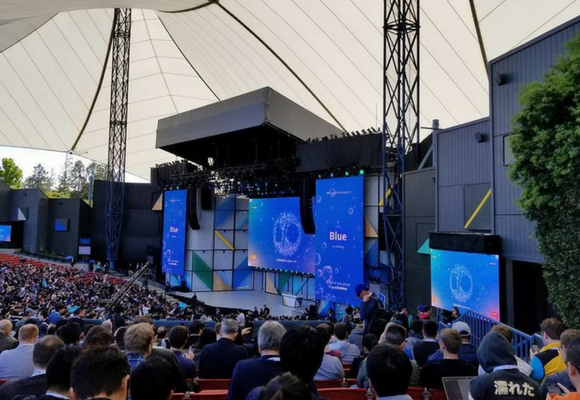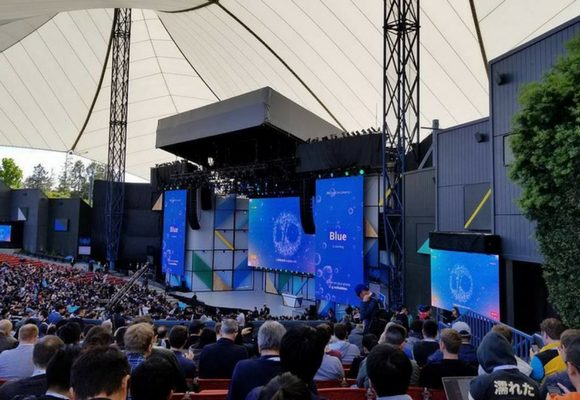Google leads the world in technological advances that affect the way we live and do business. At the Google I/O developer conference this week, we glimpse a preview of how people will interact with computing in the near future.

Shoreline Amphitheater in Mountain View, CA, scene of the 2017 Google I/O conference
Kicking off the conference, CEO Sundar Pichai opened a two-hour keynote to a packed audience of developers, tech reporters and others who were joined by viewers in 85 countries watching online to hear what was new from the tech giant, including one overarching announcement:
We have shifted from a mobile first to an AI first world.
This shift into an “artificial intelligence first” world will impact the way customers find your business AND the way you interact with those customers.
Lots of articles no doubt list the many Google feature announcements coming out of the I/O conference. But here, we zero in on something that all business owners should be aware of as we move forward into this AI-powered, machine learning-based new world…
Focus on solving user problems
One thing becomes clear as you watch the tech giant unveil feature after feature: Each new product is designed to solve a problem. You could say this is the key to Google’s success.
During yesterday’s keynote alone, Google announced many coming AI-enabled features that exemplify this problem-solution strategy. Here are just a few.
- Google Assistant will be much more connected, even allowing people to type their interactions through a phone instead of speaking them — because there are times you don’t want people to overhear what you’re saying.
- Google Photos is getting Photo Sharing, a new feature that can recognize people in your photo and proactively suggest sending them the file — because people have a problem following through and sharing their photos.
- Google Visual Positioning Service will be able to guide your indoor movements through a store such as Lowes to help you find what you want — which solves a big problem for visually impaired people, not to mention the rest of us who need help navigating aisles.
- Google Lens is a fascinating new AI feature that takes visual identification to new heights. In one application, Lens can remove obstructions in front of a subject, such as a chain link fence (see demo tweeted below), and fill in the missing elements — because people want to be able to take better pictures.
Yes, this is a real thing real people at Google are working on. #Googleio2017 pic.twitter.com/vZJqkHBtH3
— Golden Krishna (@goldenkrishna) May 17, 2017
Let’s apply Google strategy to your business. In a nutshell:
To find the opportunities awaiting discovery for your own business, ask yourself two questions:
- What do people complain about in my industry? Complaints expose problems just waiting for a new product, service or technology to solve. This kind of negative feedback also provides clues for how to best engage your prospective customers.
- What is difficult or time-consuming for prospective customers to accomplish today? In addition to listening for pain points, also just observe. Look for processes that everyone just accepts, but which require a lot of time and effort to do.
If your business innovates a solution to a problem, you can make people’s lives or jobs easier, potentially jump ahead of your competition, and grow your business.
But even if you’re not going to invent the next great product, by understanding people’s needs better you can offer solutions more effectively. Your marketing campaigns will ring truer (and have better click-through rates!) if they come from a point of empathy.
Solving people’s problems underlies the majority of Google’s advancements. Make it your business’s mantra, too.
Note: You can watch Google I/O to see various presentations live May 17–19 (check out the schedule here).
About the Author
Paula Allen has worked as senior technical writer at Bruce Clay, Inc. since 2008.
An English teacher at heart, Paula enjoys working in a room where grammar is frequently discussed and in an industry where there’s always more to learn. See her author page for links to connect with Paula on social media.
